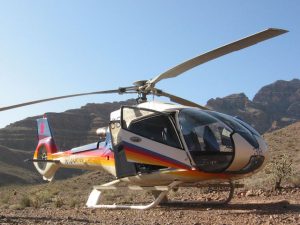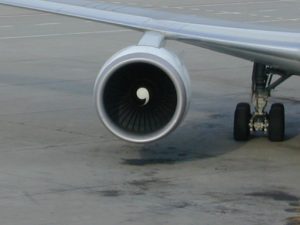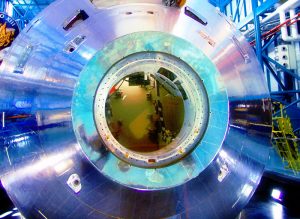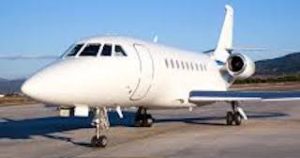Future Of A Full Flight Simulator
 Full flight simulators have long been a cornerstone in aviation training, providing realistic and immersive environments for pilots to hone their skills. As technology evolves, the future of full flight simulators is poised for significant advancements, promising even greater realism, efficiency, and utility. This comprehensive article delves into the emerging trends, technological innovations, and potential impacts of full flight simulators, exploring how these developments will shape the future of aviation training and beyond.
Full flight simulators have long been a cornerstone in aviation training, providing realistic and immersive environments for pilots to hone their skills. As technology evolves, the future of full flight simulators is poised for significant advancements, promising even greater realism, efficiency, and utility. This comprehensive article delves into the emerging trends, technological innovations, and potential impacts of full flight simulators, exploring how these developments will shape the future of aviation training and beyond.
What is a full flight simulator?
A full flight simulator is an advanced training tool designed to replicate the experience of flying an aircraft with high fidelity. These simulators offer a comprehensive and immersive environment, including realistic cockpit controls, flight dynamics, and visual representations of the outside world. They are used extensively in pilot training to simulate a wide range of scenarios, from routine operations to emergency situations.
Full flight simulators are distinguished by their sophisticated hardware and software systems, which include motion platforms, high-definition visual displays, and accurate flight control systems. These simulators are critical for pilot training, allowing trainees to practice complex manoeuvres and procedures in a controlled and safe environment.
Emerging trends in full flight simulators
1) Enhanced realism through Virtual Reality (VR) and Augmented Reality (AR)
The most exciting trend in the future of full flight simulators is the integration of virtual reality (VR) and augmented reality (AR) technologies. VR headsets provide an immersive experience by creating a 360-degree virtual cockpit environment. This technology allows pilots to interact with the simulator as if they were actually in the aircraft, enhancing the sense of realism and engagement.
AR, on the other hand, can overlay digital information onto the physical world. In the context of full flight simulators, AR can provide additional data and visualizations that complement the real-time simulation. For example, AR can project navigation aids, aircraft performance metrics, or weather conditions directly into the pilot’s field of view, improving situational awareness and training effectiveness.
2) Integration of Artificial Intelligence (AI)
Artificial Intelligence (AI) is set to play a transformative role in the future of full flight simulators. AI algorithms can enhance the realism of flight dynamics by providing more accurate simulations of aircraft behavior and environmental conditions. This includes advanced modeling of aerodynamics, weather patterns, and system responses, which can create a more authentic training experience.
Moreover, AI can be used to personalize training programs. By analyzing a pilot’s performance data, AI can adapt the simulation to focus on specific areas of improvement, provide tailored feedback, and create custom scenarios that challenge the pilot’s weaknesses. This personalised approach can lead to more efficient and effective training outcomes.
3) Advances in motion simulation technology
Motion simulation technology is crucial for replicating the physical sensations of flying, such as acceleration, turbulence, and g-forces. Future developments in motion platforms are expected to offer even greater levels of realism and precision. Innovations in this area include more sophisticated motion cues, improved feedback systems, and enhanced fidelity in replicating the forces experienced during flight.
These advancements will provide pilots with a more immersive training experience, allowing them to better acclimate to the physical sensations of flying and improving their ability to handle real-world scenarios.
4) Improved visual and sensory systems
High-definition visual systems are already a staple in full flight simulators, but future advancements promise even more stunning and realistic displays. The integration of ultra-high-resolution screens, advanced projection systems, and 3D modeling will create more lifelike and detailed visual environments.
In addition to visual improvements, sensory systems that simulate environmental factors such as temperature, sound, and turbulence are also expected to advance. These enhancements will contribute to a more immersive and realistic training experience, helping pilots to better prepare for the complexities of actual flight.
5) Cloud-based simulations and remote access
Cloud technology is poised to revolutionize the way full flight simulators are accessed and utilized. Cloud-based simulations can offer scalable and flexible training solutions, allowing users to access simulators from various locations and devices. This can significantly reduce costs associated with maintaining physical simulator hardware and provide more opportunities for remote training and collaboration.
Remote access to simulators also opens up new possibilities for global training programs, where pilots from different locations can participate in joint training exercises and simulations. This connectivity can enhance the overall training experience and foster a more collaborative learning environment.
Potential impacts of future full flight simulators
1) Enhanced pilot training and safety
The advancements in full flight simulator technology will have a profound impact on pilot training and safety. By providing more realistic and immersive training environments, pilots will be better equipped to handle the challenges of real-world flying. The ability to simulate a wide range of scenarios, including rare and complex situations, will enhance pilots’ preparedness and decision-making skills.
Furthermore, the integration of AI and advanced motion simulation technology will improve the accuracy of training, helping pilots to develop a deeper understanding of aircraft systems and flight dynamics. This will contribute to overall flight safety and reduce the risk of accidents caused by pilot error.
2) Cost efficiency and accessibility
Future developments in full flight simulators are expected to offer significant cost savings and increased accessibility. Cloud-based simulations and remote access solutions will reduce the need for expensive physical hardware and allow for more flexible training arrangements. This can make high-quality flight training more accessible to a wider range of users, including smaller flight schools and individual pilots.
The cost efficiency of advanced simulators will also benefit commercial aviation operators, who can leverage these technologies to train their crews more effectively and reduce the overall costs associated with traditional training methods.
3) Advancements in aircraft design and development
Full flight simulators are not only valuable for training but also for aircraft design and development. The future of simulators will allow for even more detailed and accurate modeling of aircraft systems and performance characteristics. This can aid in the design process by providing valuable insights into how new aircraft will behave under various conditions.
Simulators will also play a role in testing and validating new technologies, systems, and procedures before they are implemented in real-world aircraft. This can accelerate the development process and lead to more innovative and efficient aircraft designs.
4) Broader applications beyond pilot training
As full flight simulators continue to advance, their applications will extend beyond traditional pilot training. For example, simulators can be used for research and development in aviation-related fields, such as air traffic control, airport operations, and aviation safety. They can also be employed in other industries that require simulation of complex systems and environments.
The ability to simulate a wide range of scenarios and conditions will make full flight simulators valuable tools for various applications, contributing to advancements in technology and knowledge across multiple fields.
Choosing the right full flight simulator for the future
1) Assess your training needs
When selecting a full flight simulator, it’s essential to assess your specific training needs and objectives. Consider factors such as the type of aircraft you will be training on, the level of realism required, and the features that will best support your training goals. Understanding your needs will help you choose a simulator that aligns with your requirements and provides the most value.
2) Evaluate technological features
Future full flight simulators will offer a range of advanced technological features, including VR and AR integration, AI-driven personalization, and enhanced motion and visual systems. Evaluate these features to determine how they will enhance your training experience and meet your objectives. Look for simulators that offer cutting-edge technology and the ability to adapt to future advancements.
3) Consider cost and accessibility
The cost of full flight simulators can vary widely, depending on the features and capabilities they offer. Consider your budget and the potential cost savings associated with cloud-based simulations and remote access. Choose a simulator that provides the best balance of cost and functionality, ensuring that it meets your needs without exceeding your budget.
4) Research support and updates
As technology evolves, it’s important to choose a simulator that offers ongoing support and updates. Research the developer’s track record for providing updates and addressing technical issues. A simulator with strong support and regular updates will ensure that you stay current with the latest advancements and maintain a high-quality training experience.
Full of possibilities
The future of full flight simulators is filled with exciting possibilities, driven by advancements in VR, AR, AI, motion simulation, and cloud technology. These innovations will enhance the realism, efficiency, and accessibility of flight training, providing pilots with more effective tools to develop their skills and prepare for real-world flying.
As full flight simulators continue to evolve, they will play an increasingly important role in aviation training, aircraft design, and various other applications. By staying informed about the latest trends and technological developments, you can make the most of these advancements and embrace the future of flight simulation.
Whether you are a pilot, an aviation professional, or an industry stakeholder, the future of full flight simulators offers exciting opportunities to enhance training, improve safety, and advance technology. Embrace these innovations and explore the potential of full flight simulators to elevate your flying experience and achieve new heights in aviation










